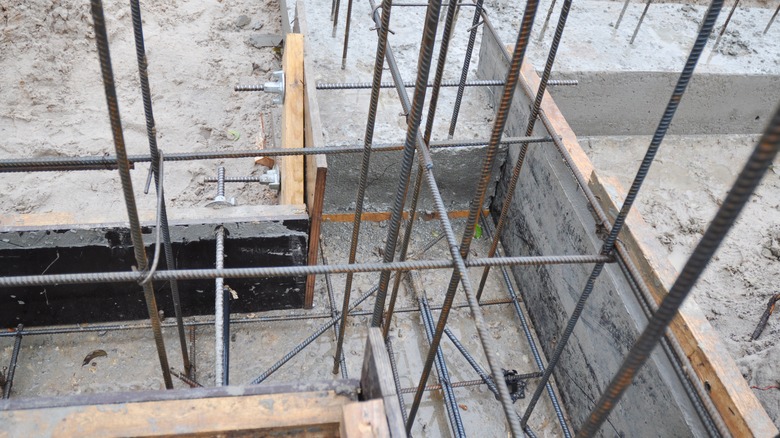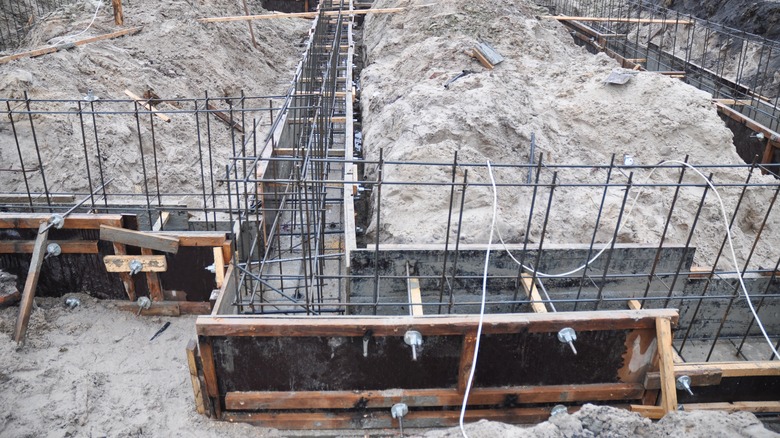What Are Footings In Home Renovation?
Mechanicals and subfloors and footings, oh my! While you (hopefully) won't have to grapple with lions, tigers, or bears in the process, home renovations can leave your head spinning, especially if you aren't familiar with the different terms for various parts of the structure. Plus, if you don't have a solid handle on your home's construction, it can be harder to understand what work needs to be done when dealing with heavy-duty renovations (along with how the rest of your home may be affected).
Fortunately, we're here to shed some light on footings. According to Concrete Network, footings are slabs of concrete, usually with steel rods inside for reinforcement, that provide stability and minimize shifting. Depending on who you speak to, there is some disagreement about whether footings go underneath the foundation (the stance taken by Concrete Network) or whether they are considered a part of the foundation (the position taken by Geo Engineer). Either way, they're an important part of making sure your home stays structurally secure.
Types of footings
As you can imagine, the heavier a building, the more support it will need to remain stable. For instance, all other things equal, a 60-story high-rise will need more help than a single-family home. Likewise, according to Daily Civil, the types of footings used generally depend on the building's size. Soil type and a measurement of how deep the support will go are other important factors.
There are many different types of footings, each with their own perks and end results. Some help spread weight evenly over an area, minimizing the chance of the house pressing down on the soil in such a way that the entire structure shifts. Other types primarily shelter the home from corrosive elements in the ground. In most cases, renovations won't require you to know which type of footing your house is built on. However, if you're doing renovations which involve or jeopardize the foundation, chances are good that you may also have to work on the footings.
Foundation repairs and footings
If you have surface cracks around the base of your home or the windows don't shut properly anymore, your foundation may be wreaking havoc on your house's structure. While it's essential to deal with these issues as soon as possible to minimize future damage, working on the foundation will inevitably bring you close to the footings. Depending on the nature of the repairs, you may even have to work on the footings themselves.
According to Legal Eagle Contractors, there are several different ways that foundations can be worked on. Some methods, like mudjacking, do not necessarily need to involve the footings. However, others can have a much more dramatic impact on your them. For example, you may decide to pour concrete around your footings, creating what is called a concrete jacket. This will ultimately expand the footings, allowing you to secure additional columns to your home. But while footings may be impacted when working on your home's foundation, generally speaking, most other renovations will not affect them.


